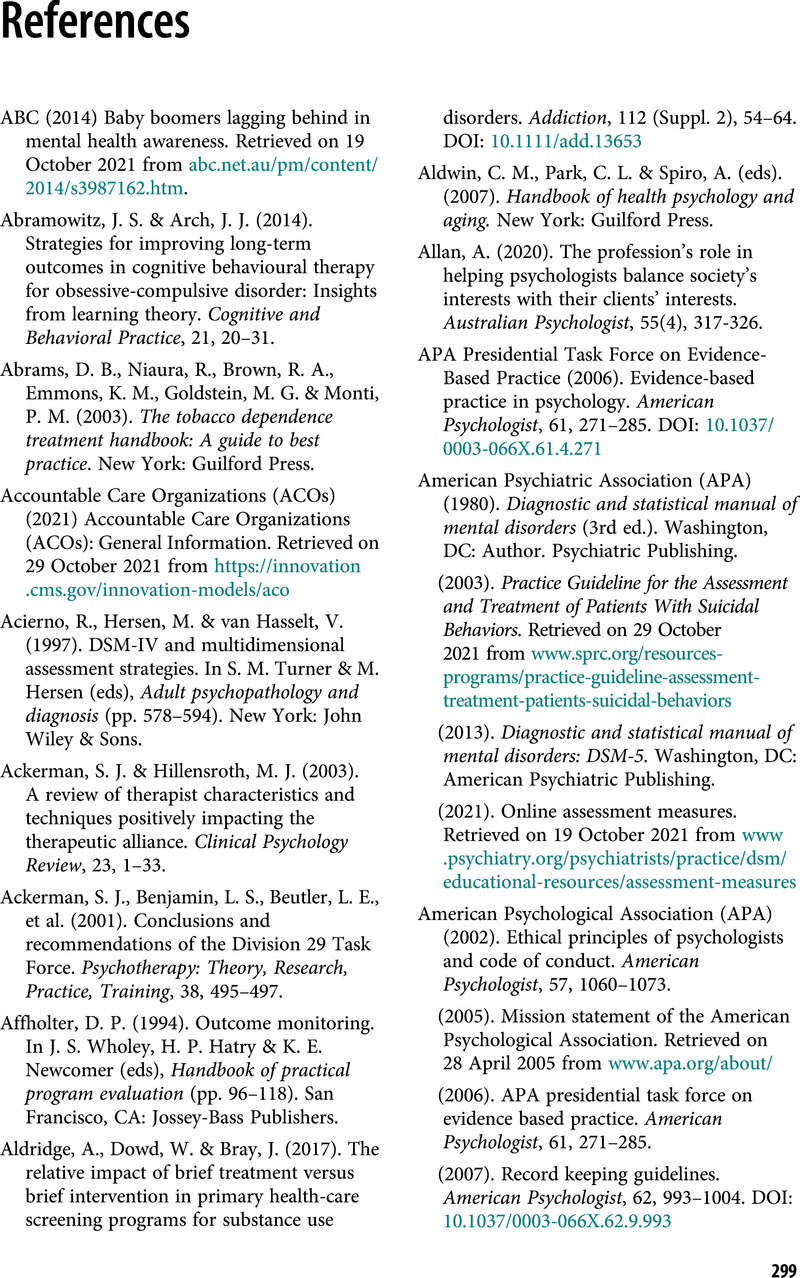Book contents
- Clinical Psychology for Trainees
- Clinical Psychology for Trainees
- Copyright page
- Contents
- Chapter 1 A Science-Informed Model of Clinical Psychology Practice
- Chapter 2 Relating with Clients
- Chapter 3 Assessing Clients
- Chapter 4 Matching Treatments and Monitoring Client Progress
- Chapter 5 Linking Assessment to Treatment: Case Formulation
- Chapter 6 Treating Clients
- Chapter 7 Brief Interventions
- Chapter 8 Low-Intensity Psychological Interventions
- Chapter 9 Group Treatment
- Chapter 10 Programme Evaluation
- Chapter 11 Case Management
- Chapter 12 Supervision
- Chapter 13 Managing Ruptures in Therapeutic Alliance
- Chapter 14 Respecting the Humanity of Clients: Cross-Cultural and Ethical Aspects of Practice
- Chapter 15 Providing Therapy at a Distance and Working in Rural and Remote Settings
- Chapter 16 Psychologists as Health Care Providers
- Chapter 17 Working in Private Practice – Dr Clair Lawson; Clinical Psychologist and Director; Lawson Clinical Psychology
- References
- Index
- References
References
Published online by Cambridge University Press: 14 April 2022
- Clinical Psychology for Trainees
- Clinical Psychology for Trainees
- Copyright page
- Contents
- Chapter 1 A Science-Informed Model of Clinical Psychology Practice
- Chapter 2 Relating with Clients
- Chapter 3 Assessing Clients
- Chapter 4 Matching Treatments and Monitoring Client Progress
- Chapter 5 Linking Assessment to Treatment: Case Formulation
- Chapter 6 Treating Clients
- Chapter 7 Brief Interventions
- Chapter 8 Low-Intensity Psychological Interventions
- Chapter 9 Group Treatment
- Chapter 10 Programme Evaluation
- Chapter 11 Case Management
- Chapter 12 Supervision
- Chapter 13 Managing Ruptures in Therapeutic Alliance
- Chapter 14 Respecting the Humanity of Clients: Cross-Cultural and Ethical Aspects of Practice
- Chapter 15 Providing Therapy at a Distance and Working in Rural and Remote Settings
- Chapter 16 Psychologists as Health Care Providers
- Chapter 17 Working in Private Practice – Dr Clair Lawson; Clinical Psychologist and Director; Lawson Clinical Psychology
- References
- Index
- References
Summary

- Type
- Chapter
- Information
- Clinical Psychology for TraineesFoundations of Science-Informed Practice, pp. 299 - 342Publisher: Cambridge University PressPrint publication year: 2022

